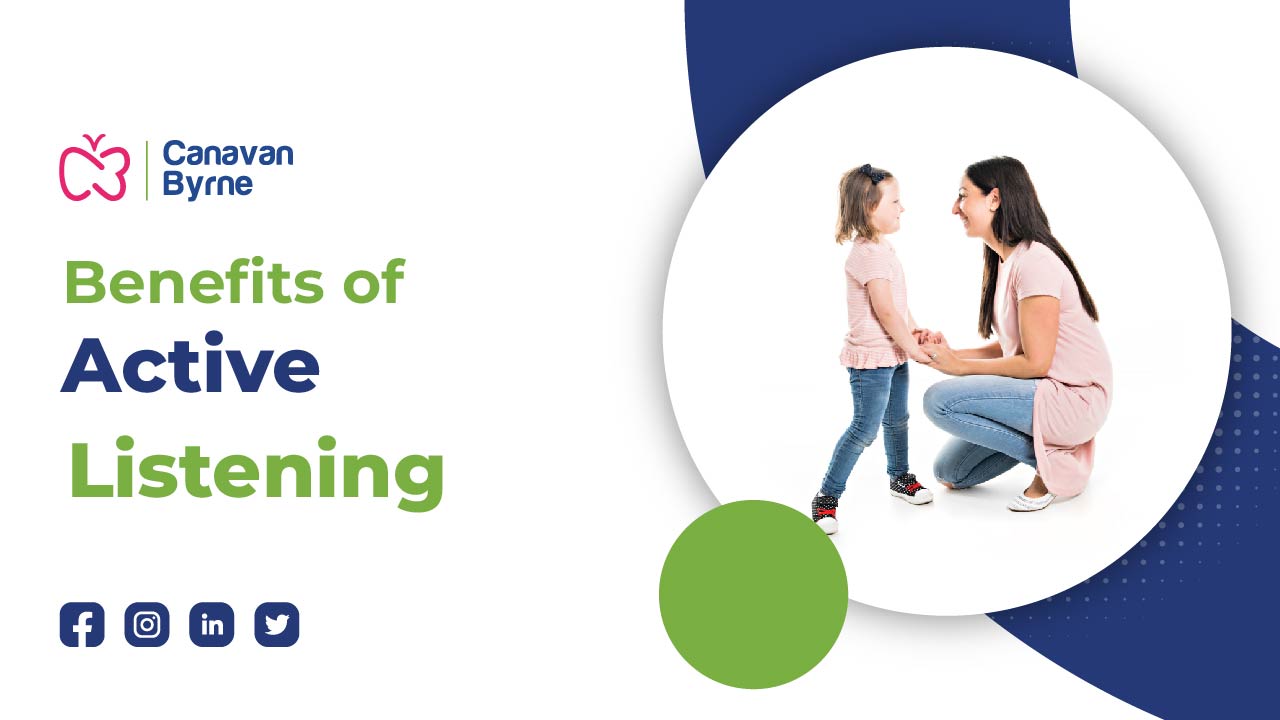
Implementing active listening with children in early years settings is crucial for building strong relationships, fostering effective communication, and supporting their overall development.
Here are some tips on how to do it effectively:
· Get down to their level: Physically stoop down or kneel to be at the child's eye level. This helps create a more comfortable and less intimidating environment for them.
· Maintain eye contact: Ensure you maintain gentle and friendly eye contact while the child speaks. It conveys that you are fully engaged and interested in what they have to say.
· Eliminate distractions: Reduce background noise and distractions as much as possible during your interactions with the child. This helps them focus on the conversation.
· Give your full attention: Avoid any other distractions and focus entirely on the child. Show them that you value what they are saying.
· Use open body language: Keep your arms uncrossed and your body language open and inviting. This makes the child feel more comfortable and encourages them to open up.
· Use verbal and non-verbal cues: Nodding, smiling, and using verbal cues like "I see" or "Tell me more" show that you are actively listening and interested in their thoughts and feelings.
· Reflect their feelings: Help children identify and understand their emotions by mirroring what they express. For example, "It sounds like you're feeling excited about your new toy."
· Encourage them to express themselves: Give children the opportunity to share their thoughts and feelings freely. Avoid interrupting or finishing their sentences for them.
· Use open-ended questions: Instead of asking yes-or-no questions, ask open-ended questions that encourage children to provide detailed responses. This promotes conversation and critical thinking.
· Be patient: Children may take their time to express themselves or find the right words. Be patient and avoid rushing them during conversations.
· Avoid judgment and criticism: Create a safe and non-judgmental space where children feel comfortable sharing their thoughts and concerns without fear of punishment or criticism.
· Validate their feelings: Let children know that it's okay to feel the way they do, even if you don't necessarily agree with them. This helps build their self-esteem and emotional intelligence.
· Use active listening skills: Practice active listening techniques, such as paraphrasing what the child has said to ensure you've understood correctly. This also shows that you are genuinely engaged in the conversation.
· Summarise and follow up: At the end of the conversation, summarise what the child has shared and ask if they have any questions or if there's anything else they'd like to discuss.
· Be consistent: Consistently practice active listening in your interactions with children to build trust and establish a positive communication pattern.
By implementing these tips for active listening, you can create a supportive and nurturing environment in early years settings, where children feel heard, valued, and empowered to express themselves and develop their communication skills.
Download our Active Listening Visual Aid pack to display in your setting for all to implement: https://earlyyearsshop.ie/product/active-listening-visual-displays/
Share this article



